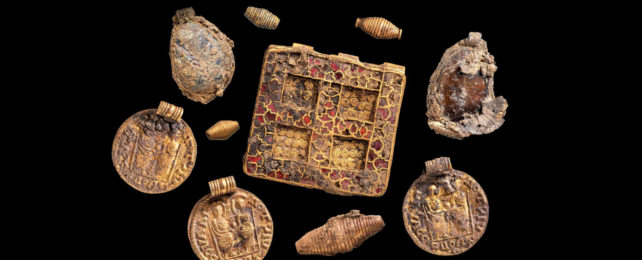Archaeologists have discovered a treasure trove that reveals a brief period in medieval English history where pagan and Christian traditions melded together, and women held positions of power in the church.
The artifacts were uncovered from a 1400 year-old grave found just outside of Northampton, England, and are considered to be some of the most significant finds for this period.
It was April 11, the second-last day of an eight-week dig in the small village of Harpole, when archaeologist Levente-Bence Balázs saw something poking out of the dirt. It was the crowns of two teeth, which suggested a burial site.
"Then two gold items appeared out of the earth and glinted at me," Balázs told Amelia Hill at The Guardian.
"These artifacts haven't seen the light of day for 1,300 years, and to be the first person to see them is indescribable."
It's not every day archaeologists spot gold glinting in the soil and muck. Leader of a team of five excavators from the Museum of London Archaeology (MOLA), Balázs explained to CNN it was the first time in 17 years of excavating he'd found an artifact made from the precious metal.
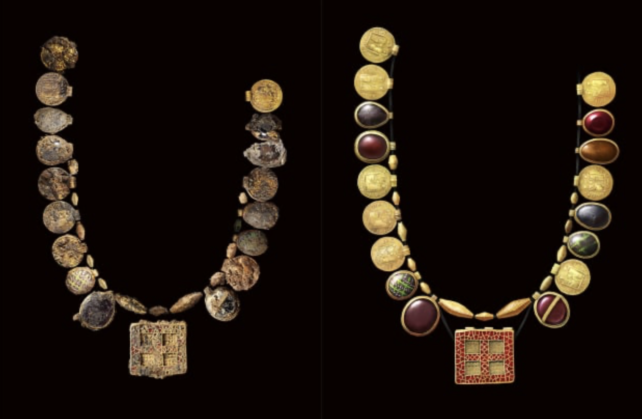
His team unearthed an opulent 30-piece necklace of Roman coins, garnets, glass, and semi-precious stones – thought to be the "richest" necklace of its kind ever found in Britain.
The skeleton had decomposed except for a few fragments of tooth enamel, but based on the fact necklaces are almost exclusively found with female bodies, it's fair to assume the remains were once of an affluent or high-ranking woman.
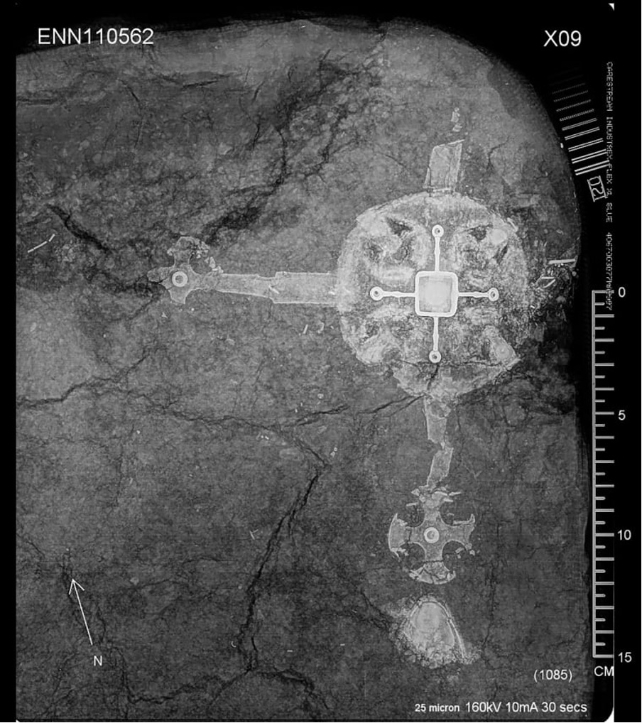
The woman was also buried with a large silver cross, two decorated pots, and a shallow copper dish.
The cross had deteriorated, but its shape remained visible in X-ray imagery taken of the soil surrounding the grave. The cross was decorated with unusual silver human faces, which had survived the passage of time.
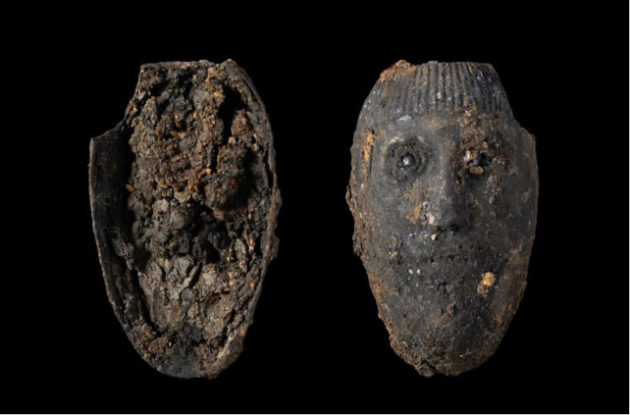
The mix of objects in the grave suggests that the woman lived in an era, around 630 CE and 670 CE, where pagan and Christian beliefs were still intermingling.
"Burying people with lots and lots of bling is a pagan notion, but this is obviously heavily vested in Christian iconography, so it's that period of quite rapid change," archaeology consultant Simon Mortimer told Associated Press journalist Jill Lawless.
The richness and symbolism of the objects suggests the woman was a wealthy Christian leader, such as the head of an abbey or a princess.
Experts agree that she must have been one of the earliest women in Britain to hold a position of power in the church.
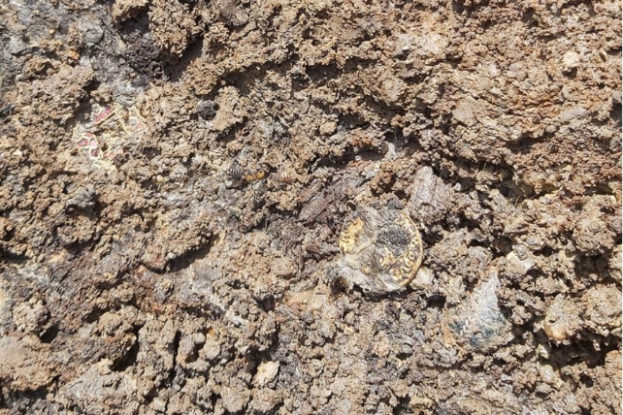
"This is the most significant early medieval female burial ever discovered in Britain," Balázs told The Guardian. "It is an archaeologist's dream to find something like this."
About a dozen other graves of high-status women have been found in England, some with similar necklaces. However, few of those sites date back earlier than the 7th century CE as burials of high-status men were more common.
As Christianity took off, valuable objects like necklaces were less likely to be laid at graves as this was frowned upon by the early Christian church, according to Lyn Blackmore, an archaeologist at the Museum of London Archaeology.
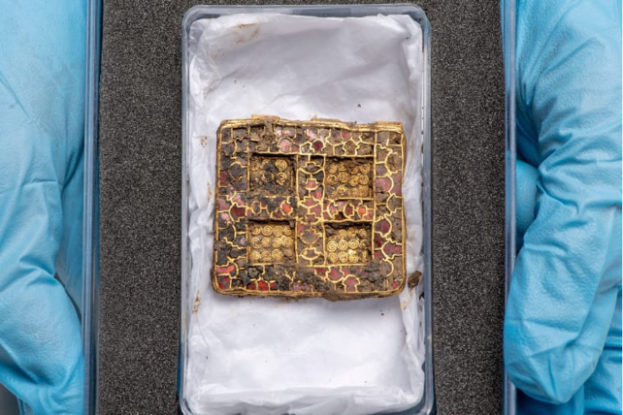 The centerpiece of the necklace. (MOLA/Andy Chopping)
The centerpiece of the necklace. (MOLA/Andy Chopping)
"The Harpole Treasure, it's not the richest in terms of the number of artifacts but it is the richest in terms of investment of wealth … and it has the highest amount of gold and religious symbolism," she said at a news briefing.
The archaeologists had been commissioned to excavate the site by a company, Vistry Group, ahead of a housing development.
As the archaeologists announced their findings this week, residents were gearing up to move into the new property. The exact location of the burial site has not been disclosed but it has not been built over.
